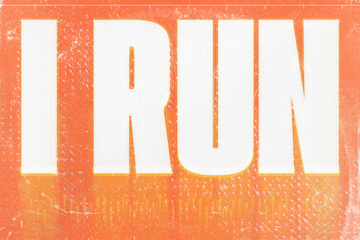Festival Fence Jumping Has Gone From A Harmless Rite Of Passage To Coordinated Acts Of Violence
Social media coordinated incidents have seen fence jumping spiral into a major crisis for large event producers. Festival Promoter and Boomtick Director Liam Mazzucchelli shares his take on the growing issue.

Breakfest 2017. Photo by Adrian Thomson.
Social media coordinated incidents have seen fence jumping spiral into a major crisis for large event producers, and with only minor (rarely enforced) penalties as the main deterrent, many festivals are having to bear the cost of expensive security upgrades to keep their ticketholders safe. Festival Promoter and Boomtick Director Liam Mazzucchelli shares his take on the growing issue.
As we head into the summer season of music festivals, it seems timely the issue of fence-jumping be discussed. What used to be seen as a bit of harmless fun (hell, even considered a rite of passage as a 17-year-old) has in recent years become a curse and a blight on our industry; never before have we seen the level of violence, organisation and disruption that's become so common now.
Coordinating themselves on social media and setting out to cause as much mayhem and antisocial disruption as possible, seems to be the fence-jumper's objective. Not satisfied with a sneaky entry, (WA) events have experienced packs of often violent young men and women who think it's OK to push over fences and storm the gates en masse, or hurl projectiles with absolutely no regard for any authority or person's safety. There are many examples over the last three to five years which involve horrific physical and verbal abuse aimed at people simply doing their job.
The culture of 'jumping' also seems to be just as much about the 10-seconds of infamy jumpers get on social media when they post, rather than actually gaining entry. 'Jumpers' show no regard for the ticket purchasing patrons on the other side of the fence.
Don't miss a beat with our FREE daily newsletter
As event producers, we should be able to put a compliant temporary fence around an approved site and focus on providing a safe, well-run event for the patrons who have purchased tickets. A patron is entitled to party safe within a licensed area without the fear of some dickhead smashing into them as they run through the crowd to evade capture, or worse, push a fence panel onto them.
This potential for physical harm is just one of the real costs, but there are other costs, both direct and intangible, and they're adding up. The type of organised 'jumping' we see today results in the deployment of additional resources to deal specifically with the issue; additional fencing, dedicated fence line and exclusion zone security, container walls, CCTV, insurances, User Pays police. These are just a few examples, but they add tens of thousands of dollars to the cost base. Initially, these costs are borne by the event, but ultimately they flow onto the consumer and are reflected in higher ticket prices. One recent Perth event went from installing 2.2km of fence line in 2016 to 5km in 2017 in total fencing just to protect the site from jumpers. In laymen's terms, that's increasing from two fence lines up to five.
But the cost most don't consider is the reputational damage to the event brand. Artists, suppliers and stakeholders are all impacted by the negative associations. When touring artists and logistics providers witness this kind of behaviour it leaves a sour taste and reflects poorly on us all; not just the event but the city. Certain cities have become synonymous with fence-jumping and that's just bad for business.
So, what do we do about it? Aren't the fence jumpers breaking the law? It seems there isn't a clear answer and while police are often singled out as being the solution, it's just not that simple.
These offenders seem to understand Crowd Controllers have no jurisdictional authority. They're not deterred by Move On notices and local government laws often make it difficult to prosecute for trespass. As a deterrent, there needs to be consequences for actions, but jumpers often fall between the regulatory cracks of the criminal code, local government laws and the Liquor Control Act. As a result, we have no clear and measurable punishment for fence jumping, and therefore no effective way to tackle the issue beyond expensive security upgrades.
'Alcohol-fuelled violence' was the hot-button issue a decade ago and the industry and its regulators developed strategies which brought about social change rather than just relying on police to mop up the mess. I'm not suggesting 'jumping' is as significant an issue, but a similar approach could be taken with an awareness campaign calling out this type of behaviour for what it is, illustrating the wider impacts it has on festivals and their sustainability. Parents; it's not OK to let your kids jump at festivals. We know most of you know they're doing it. Friends; don't encourage your mates. Patrons; don't let these idiots ruin your day out. Call 'em out.
And for those who still think jumping is an innocent bit of fun or a victimless crime, it's worth considering just how such activities could, in the worst-case scenario, lead to major incidents. We operate in a new world where festivals and similar events are considered high-risk large public gatherings. The risk management and execution of public safety is paramount, but it also relies on the public cooperating with event organisers to makes sure those precautions work as they're supposed to. All resourcing should be focused on managing patron safety and experience within the event. Let us get on with creating a great event for the people have purchased tickets.







